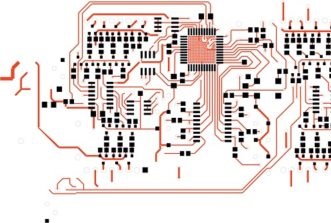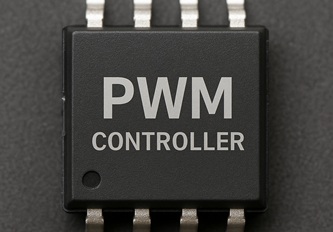This website uses cookies so that we can provide you with the best user experience possible. Cookie information is stored in your browser and performs functions such as recognising you when you return to our website and helping our team to understand which sections of the website you find most interesting and useful.
Morse Micro Unveils WiFi HaLoW Transceiver Technology
Morse Micro has unveiled the innovative transceiver technology embedded in its HaLoW long-range sub-GHz WiFi chip, the MM8108. This cutting-edge Wi-Fi SoC features an integrated power amplifier (PA) capable of achieving a regulatory-compliant 26dBm for BPSK and 19dBm for 256-QAM signals. The efficiency of this chip surpasses that of existing CMOS OFDM transmitters by four times, resulting in a remarkable 75% reduction in power consumption. Such advancements significantly extend the battery life of Internet of Things (IoT) and edge devices, making them more sustainable and efficient.
The MM8108 chip integrates several key technologies, including Digital Power Amplification (DPA), Multi-Way Doherty architecture, and Digital Pre-Distortion (DPD). By employing a unique approach, the PA is divided into multiple sub-arrays rather than following the conventional two-way Doherty architecture. Each sub-array is optimized for efficiency at different back-off points, enhancing the overall average efficiency when transmitting high-PAPR signals.
One notable feature of the MM8108 is its ability to adjust the supply voltage, a departure from traditional code-based back-off methods. By reducing the supply voltage from 1.8 V to 0.45 V, a significant 12 dB reduction in peak power can be achieved with minimal efficiency penalties. This approach ensures that power efficiency is maximized, even at lower output powers, offering a more sustainable solution for wireless communication.
These advanced technologies not only optimize power efficiency but also deliver high performance, extended range, and low power dissipation within a single chip. The MM8108 has already demonstrated its capabilities by establishing a 3km link in urban areas and an impressive 16km link in rural desert regions, showcasing its versatility and reliability in various environments.
Michael De Nil, the co-founder and CEO of Morse Micro, expressed his excitement about the breakthrough achieved with the MM8108 chip. He emphasized the significance of this milestone for both Morse Micro and the Wi-Fi HaLow technology. De Nil highlighted the exceptional efficiency of the transmitter, positioning it as a world-leading innovation. He also underscored the role of Australian engineering in driving semiconductor innovation, challenging the notion that such advancements are exclusive to Silicon Valley. With the MM8108 chip and the release of the accompanying whitepaper, Morse Micro is at the forefront of next-generation Wi-Fi technology, showcasing the capabilities of Australian engineering on a global stage.














